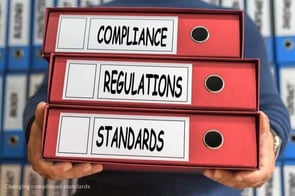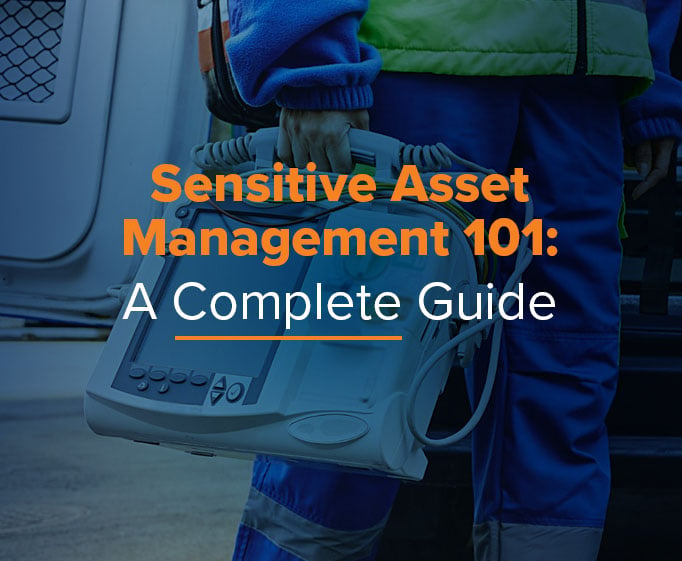By Jay Palter | July 18, 2024
Navigating regulatory standards is always challenging, no matter what sector you work in. One activity that often gets overlooked when developing compliance practices is the management of physical assets—things like mobile devices, toolkits, consumable materials, physical keys, and many other basic, day-to-day operational equipment.
The good news is that smart technology systems offer some compelling new capabilities for managing physical business assets. These business management platforms save valuable time, help organize maintenance and audit schedules, and send regular alerts to ensure timely adherence to any regulatory requirements you work with.
In this article, we'll explore some of the fundamentals of physical asset management compliance and highlight how automated management systems—like smart lockers—can enhance compliance efforts and improve daily workflows.
Understanding physical asset management compliance
Physical asset management compliance, or simply regulatory compliance, involves adhering to industry standards and state and federal laws on storing, tracking, using, and disposing of physical assets and equipment. This process requires regular and consistent monitoring of business operations to ensure that staff follow your established protocols.
Penalties for not following governmental and industry regulations vary. For industry standards, a non-compliant organization might lose its certifications. State or federal breaches often result in steep fines or even more aggressive sanctions.
There are two primary types of compliance in physical asset management:
1. Internal compliance
Internal compliance involves adhering to standards set by an organization’s internal management. This includes creating policies and procedures to ensure quality operations and asset management within the organization. For example, regulations for procuring manufacturing equipment and sufficiently secure mobile devices
2. External compliance
External compliance involves following regulations established by external legal or regulatory authorities. These legally binding regulations significantly influence how organizations manage their assets and operations. Adhering to external standards enhances accountability and transparency, ensuring robust processes and procedures. For instance, regulations set by the International Organization for Standardization (ISO) mandate businesses to achieve maximum safety for their employees. Or US Federal regulations on managing workplace safety equipment set by the Occupational Safety and Health Administration (OSHA).
Best Practices for Physical Asset Management
Maximize the value of assets and equipment. Mitigate risks associated with its ownership and use
Challenges in asset management compliance
Challenges will vary from business to business, but since many work with the same industry or governmental regulations, we see some convergence in their struggles. Some of the most common challenges in achieving regulatory compliance for asset management include:

1. Inadequate data
Without a robust system to record and track workflows, meeting regulatory requirements becomes much harder. Incomplete or missing data on equipment condition and user access can prevent you from generating complete reports.

2. Changing compliance standards
Market trends and regulatory requirements constantly evolve, requiring you to regularly reevaluate your organization’s quality control standards. Keeping up with these changes and maintaining security compliance is challenging without frequent policy reviews.

3. Unreliable tracking and inventory systems
Documenting workflows is only possible if your data-capturing system is reliable. Manual spreadsheet tracking and manual database entries are inefficient and are more likely to expose critical workflow data to security breaches, risking the loss or compromise of sensitive information.

4. Inconsistent processes
Achieving consistent baseline protocols and compliance documentation standards can be difficult when contending with varying departmental structures. This challenge is especially pronounced in businesses with distributed operations across multiple jurisdictions, as each location may be subject to different regulations tailored to its specific business landscape.
10 ways to make regulatory compliance easy using a smart asset tracking system
Modern asset tracking systems are equipped with smart technology to ensure compliance with any regulatory standard. Here are ten ways to leverage smart asset tracking to maintain regulatory compliance efficiently.
This involves thorough research and consultation with legal experts to understand each regulation's specifics. Different regulations may apply to various aspects of your business, such as accounting practices, data security, and human resource management. Once clear, these requirements should be incorporated into your internal policies and communicated to department heads to ensure organization-wide adherence.
Compliance audits should be scheduled annually or semi-annually, depending on your business needs and any specific regulatory requirements, of course. Inventory audits help identify gaps in compliance, verify asset quantities and conditions, and ensure that all assets are properly maintained. User audits can reduce security risks by removing employees no longer with the organization and identifying access levels that need to be reduced or expanded. Inventory and user audits help maintain safety compliance with internal policies and regulatory standards. Audit readiness also provides an opportunity to improve business workflows and enhance overall operational efficiency.
Asset tracking systems manage report data entry for you by automatically logging all relevant events, from asset transactions to late returns, irregular use patterns, maintenance issues, and fault codes. Automation reduces the risk of human error and ensures that all data is accurate and up-to-date. Accurate data management helps generate reliable reports, maintain proper records, and streamline the entire audit process.
“Regular monitoring” has a specific meaning in the context of safety compliance. It involves reviewing, monitoring, and analyzing business processes to identify areas for improvement. Implementing standardized policies and practices across the organization to guide workers and administrators in interacting with an asset tracking system guarantees uniformity in compliance management. Regular monitoring helps quickly identify and address any deviations from security compliance, reducing the risk of regulatory penalties and enhancing operational efficiency.
A compliance contingency plan should include structured frameworks and procedures to address emergencies or unexpected risks. A dedicated compliance team can oversee these plans and work closely with the legal team to devise solutions for any issues. The automated alerting provided by a smart asset tracking system can make their lives significantly easier.
Contingency planning ensures that your organization remains compliant despite unforeseen circumstances, safeguarding against regulatory breaches and their associated penalties.
By using smart asset tracking systems, organizations can monitor asset usage and ensure adherence to safety standards. Centralizing information storage in a secure repository accessible only to authorized personnel minimizes the risk of data breaches and ensures that asset-related information is tamper-proof. This approach enhances the security of sensitive data and reduces the likelihood of compliance violations.
Ensuring your workforce is well-versed in using advanced asset tracking systems is crucial for long-term success. Regular training helps employees stay updated with the latest features and best practices. This continuous learning approach ensures that your organization swiftly adapts to new technologies and regulatory changes.
Detailed compliance reporting enable organizations to analyze their performance over time and make informed decisions regarding asset replacement, repair, and disposal. Periodic review of these metrics helps optimize compliance outcomes and achieve business goals. Effective asset management practices ensure that assets are well-maintained and compliant, supporting strategic decision-making and overall business success.
Dedicated vendors possess extensive knowledge and experience in smart asset tracking and regulatory compliance. They stay updated with the latest industry trends, technological advancements, and regulatory changes, ensuring that your asset management system is both cutting-edge and compliant. This expertise allows them to provide valuable insights and recommendations tailored to your industry needs.
A dedicated vendor can also offer customized solutions specifically designed to meet your organization's unique requirements. Whether you need specialized hardware configurations, bespoke software features, or tailored integration with existing systems, a dedicated vendor can deliver a solution that fits seamlessly into your operations.
Adopting smart asset tracking systems addresses current compliance needs and positions your organization for future success. Integrating smart asset tracking systems means your organization is already on the cutting edge of technology. These systems are built to adapt to technological advancements, ensuring you are always leveraging the latest tools and methodologies.
Smart asset tracking systems are inherently scalable, allowing your organization to expand operations without completely overhauling your asset management infrastructure. Whether you add new locations, increase your asset inventory, or scale up your workforce, smart systems can seamlessly accommodate these changes.
Improve operations and regulatory compliance with smart asset tracking
To maximize productivity, aligning your asset-tracking activities with your compliance goals is essential. Adhering to regulatory policies mandated by international bodies positively impacts your organizational reputation. It's important to regularly evaluate your business operations to ensure compliance is achieved efficiently. By doing so, you meet legal requirements and enhance the overall efficiency and reliability of your operations, leading to a more productive and respected organization.
Transform your compliance management with smart technology
By leveraging smart technology, you can protect your company and keep your employees safe with technology designed to help you comply with all relevant policies and regulations.
Subscribe to our blog

Jay Palter
Vice President of Marketing & Partnerships




